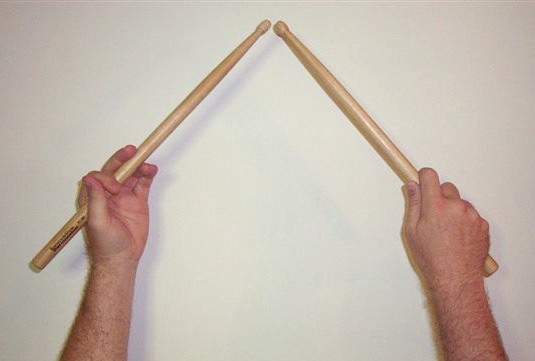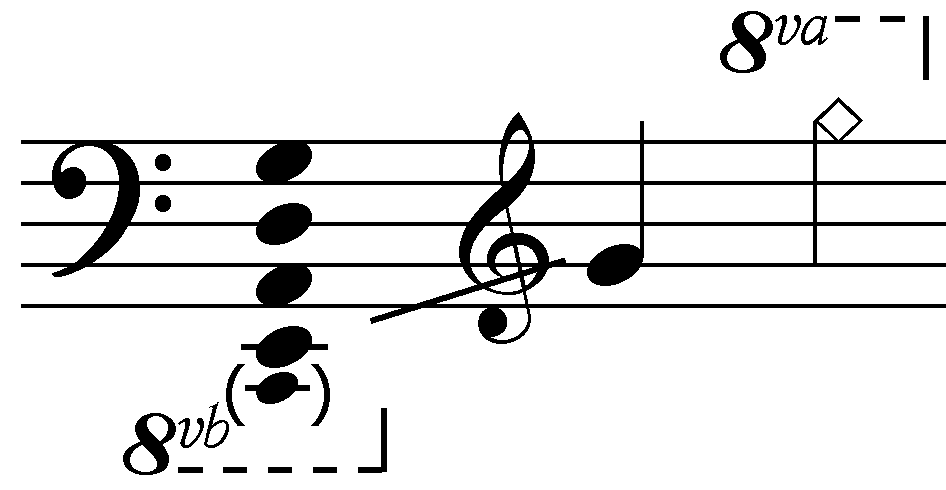|
Blues Everywhere
''Blues Everywhere'' is a live album by Shirley Scott recorded in 1991 at Birdland and released on the Candid label.Payne, DShirley Scott discographyaccessed July 5, 2012 Reception Allmusic awarded the album 4 stars with reviewer, Michael Erlewine, stating "The twist is that Scott is playing acoustic piano throughout. It's not the usual sound, but she can play that thing".Erlewine, MAllmusic Reviewaccessed July 5, 2012 Track listing ''All compositions by Shirley Scott except as indicated'' # " Autumn Leaves" (Joseph Kosma, Johnny Mercer, Jacques Prévert) - 6:16 # "Blues Everywhere" - 9:09 # "Oasis" - 8:41 # "Embraceable You" (George Gershwin, Ira Gershwin) - 9:16 # "Triste" (Antônio Carlos Jobim) - 8:55 # " 'Round Midnight" (Thelonious Monk) - 8:58 # "The Theme" (Miles Davis) - 6:06 Personnel * Shirley Scott - piano * Arthur Harper - bass * Mickey Roker - drums A drum kit (also called a drum set, trap set, or simply drums) is a colle ... [...More Info...] [...Related Items...] OR: [Wikipedia] [Google] [Baidu] |
Shirley Scott
Shirley Scott (March 14, 1934 – March 10, 2002) was an American jazz organist. Her music was noted for its mixture of bebop, blues and gospel elements. She was known by the nickname "Queen of the Organ". Life and career Scott was born in Philadelphia, Pennsylvania. Her father operated a jazz club in the basement of the family home and her brother played Saxophone. At the age of eight, Scott began piano lessons. After enrolling at Philadelphia High School for Girls, where she was awarded a scholarship, Scott switched to trumpet and played in the all-city schools band. She studied for bachelor and master's degrees at Cheyney University. Later in life Scott would return to the university as a teacher. As a performer in the 1950s, she played the Hammond B-3 organ. Her recordings with Eddie "Lockjaw" Davis included the hit "In the Kitchen". Influenced by gospel and blues, she played soul jazz in the 1960s with Stanley Turrentine, who became her husband during the same deca ... [...More Info...] [...Related Items...] OR: [Wikipedia] [Google] [Baidu] |
Embraceable You
"Embraceable You" is a jazz standard song with music by George Gershwin and lyrics by Ira Gershwin. The song was written in 1928 for an unpublished operetta named ''East Is West''. It was published in 1930 and included in that year's Broadway musical '' Girl Crazy'', performed by Ginger Rogers in a song and dance routine choreographed by Fred Astaire. Billie Holiday's 1944 recording was inducted into the Grammy Hall of Fame in 2005. Other versions * Nat King Cole – (1943) * Bing Crosby (recorded November 12, 1947) – included in the album '' Bing Crosby Sings Songs by George Gershwin''. * Ella Fitzgerald – '' Ella Fitzgerald Sings the George and Ira Gershwin Songbook'' (1959) * Jane Froman – '' With a Song in My Heart'' * Judy Garland – '' Girl Crazy'', film (1943) * Erroll Garner * Herbie Hancock – ''Gershwin's World'' (1998) * Billie Holiday – 1944 * Billie Holiday – ''Body and Soul'' (1957) * Chet Baker – '' Embraceable You (album)'' (1957) * Char ... [...More Info...] [...Related Items...] OR: [Wikipedia] [Google] [Baidu] |
1991 Live Albums
File:1991 Events Collage.png, From left, clockwise: Boris Yeltsin, elected as Russia's first president, waves the new flag of Russia after the 1991 Soviet coup d'état attempt, orchestrated by Soviet hardliners; Mount Pinatubo erupts in the Philippines, making it the second-largest volcanic eruption of the 20th century; MTS Oceanos sinks off the coast of South Africa, but the crew notoriously abandons the vessel before the passengers are rescued; Dissolution of the Soviet Union: The Flag of the Soviet Union, Soviet flag is lowered from the Kremlin for the last time and replaced with the flag of the Russian Federation; The United States and soon-to-be dissolved Soviet Union sign the START I Treaty; A tropical cyclone 1991 Bangladesh cyclone, strikes Bangladesh, killing nearly 140,000 people; Lauda Air Flight 004 crashes after one of its Thrust reversal, thrust reversers activates during the flight; A United States-led coalition initiates Operation Desert Storm to remove Iraq and ... [...More Info...] [...Related Items...] OR: [Wikipedia] [Google] [Baidu] |
Drum Kit
A drum kit (also called a drum set, trap set, or simply drums) is a collection of drums, cymbals, and other auxiliary percussion instruments set up to be played by one person. The player (drummer) typically holds a pair of matching drumsticks, one in each hand, and uses their feet to operate a foot-controlled hi-hat and bass drum pedal. A standard kit may contain: * A snare drum, mounted on a stand * A bass drum, played with a beater moved by a foot-operated pedal * One or more tom-toms, including rack toms and/or floor toms * One or more cymbals, including a ride cymbal and crash cymbal * Hi-hat cymbals, a pair of cymbals that can be manipulated by a foot-operated pedal The drum kit is a part of the standard rhythm section and is used in many types of popular and traditional music styles, ranging from rock and pop to blues and jazz. __TOC__ History Early development Before the development of the drum set, drums and cymbals used in military and orchestral mu ... [...More Info...] [...Related Items...] OR: [Wikipedia] [Google] [Baidu] |
Mickey Roker
Granville William "Mickey" Roker (September 3, 1932 – May 22, 2017) was an American jazz drummer. Biography Roker was born into extreme poverty in Miami to Granville (Sr.) and Willie Mae Roker. After his mother died (his father never lived with them), when he was only ten, he was taken by his grandmother to live in Philadelphia with his uncle Walter, who gave him his first drum kit and communicated his love of jazz to his nephew. He also introduced the young Roker to the jazz scene in Philadelphia, where drummer Philly Joe Jones became Roker's idol. In the early 1950s, he began to gain recognition as a sensitive yet hard-driving big-band drummer. He was especially favored by Dizzy Gillespie, who remarked of him that "once he sets a groove, whatever it is, you can go to Paris and come back and it's right there. You never have to worry about it." Roker was soon in demand for his supportive skills in both big-band and small-group settings. While in Philadelphia he played wit ... [...More Info...] [...Related Items...] OR: [Wikipedia] [Google] [Baidu] |
Double Bass
The double bass (), also known simply as the bass () (or #Terminology, by other names), is the largest and lowest-pitched Bow (music), bowed (or plucked) string instrument in the modern orchestra, symphony orchestra (excluding unorthodox additions such as the octobass). Similar in structure to the cello, it has four, although occasionally five, strings. The bass is a standard member of the orchestra's string section, along with violins, viola, and cello, ''The Orchestra: A User's Manual'' , Andrew Hugill with the Philharmonia Orchestra as well as the concert band, and is featured in Double bass concerto, concertos, solo, and chamber music in European classical music, Western classical music.Alfred Planyavsky [...More Info...] [...Related Items...] OR: [Wikipedia] [Google] [Baidu] |
Piano
The piano is a stringed keyboard instrument in which the strings are struck by wooden hammers that are coated with a softer material (modern hammers are covered with dense wool felt; some early pianos used leather). It is played using a musical keyboard, keyboard, which is a row of keys (small levers) that the performer presses down or strikes with the fingers and thumbs of both hands to cause the hammers to strike the strings. It was invented in Italy by Bartolomeo Cristofori around the year 1700. Description The word "piano" is a shortened form of ''pianoforte'', the Italian term for the early 1700s versions of the instrument, which in turn derives from ''clavicembalo col piano e forte'' (key cimbalom with quiet and loud)Pollens (1995, 238) and ''fortepiano''. The Italian musical terms ''piano'' and ''forte'' indicate "soft" and "loud" respectively, in this context referring to the variations in volume (i.e., loudness) produced in response to a pianist's touch or pressure on ... [...More Info...] [...Related Items...] OR: [Wikipedia] [Google] [Baidu] |
Miles Davis
Miles Dewey Davis III (May 26, 1926September 28, 1991) was an American trumpeter, bandleader, and composer. He is among the most influential and acclaimed figures in the history of jazz and 20th-century music. Davis adopted a variety of musical directions in a five-decade career that kept him at the forefront of many major stylistic developments in jazz. Born in Alton, Illinois, and raised in East St. Louis, Davis left to study at Juilliard in New York City, before dropping out and making his professional debut as a member of saxophonist Charlie Parker's bebop quintet from 1944 to 1948. Shortly after, he recorded the '' Birth of the Cool'' sessions for Capitol Records, which were instrumental to the development of cool jazz. In the early 1950s, Davis recorded some of the earliest hard bop music while on Prestige Records but did so haphazardly due to a heroin addiction. After a widely acclaimed comeback performance at the Newport Jazz Festival, he signed a long-term co ... [...More Info...] [...Related Items...] OR: [Wikipedia] [Google] [Baidu] |
Thelonious Monk
Thelonious Sphere Monk (, October 10, 1917 – February 17, 1982) was an American jazz pianist and composer. He had a unique improvisational style and made numerous contributions to the standard jazz repertoire, including " 'Round Midnight", " Blue Monk", " Straight, No Chaser", " Ruby, My Dear", "In Walked Bud", and "Well, You Needn't". Monk is the second-most-recorded jazz composer after Duke Ellington. Monk's compositions and improvisations feature dissonances and angular melodic twists and are consistent with his unorthodox approach to the piano, which combined a highly percussive attack with abrupt, dramatic use of switched key releases, silences, and hesitations. Monk's distinct look included suits, hats, and sunglasses. He also had an idiosyncratic habit during performances: while other musicians continued playing, Monk would stop, stand up, and dance for a few moments before returning to the piano. Monk is one of five jazz musicians to have been featured on the cov ... [...More Info...] [...Related Items...] OR: [Wikipedia] [Google] [Baidu] |
'Round Midnight (song)
"Round Midnight" (sometimes titled "Round About Midnight") is a 1943 composition by American jazz pianist Thelonious Monk that quickly became a jazz standard and has been recorded by a wide variety of artists. A version recorded by Monk's quintet was added to the Grammy Hall of Fame in 1993. It is one of the most recorded jazz standards composed by a jazz musician. Composition and Monk's first recording It is thought that Monk composed the song sometime in 1940 or 1941. However, Monk's longtime manager Harry Colomby claims the pianist may have written an early version around 1936 (at the age of 19). The song was copyrighted September 24, 1943 in C minor under the title "I Need You So", with lyrics by a friend of Monk's named Thelma Murray. The first recording was made by Cootie Williams on August 22, 1944, after the pianist Bud Powell persuaded Williams to record the tune. Monk first recorded the song on November 21, 1947. It later appeared on the Blue Note album '' Genius of Mod ... [...More Info...] [...Related Items...] OR: [Wikipedia] [Google] [Baidu] |
Antônio Carlos Jobim
Antônio Carlos Brasileiro de Almeida Jobim (25 January 1927 – 8 December 1994), also known as Tom Jobim (), was a Brazilian composer, pianist, guitarist, songwriter, arranger, and singer. Considered one of the great exponents of Brazilian music, Jobim internationalized bossa nova and, with the help of important American artists, merged it with jazz in the 1960s to create a new sound, with popular success. As a result, he is sometimes known as the "father of bossa nova". Jobim was a primary force behind the creation of the bossa nova style, and his songs have been performed by many singers and instrumentalists internationally since the early 1960s. In 1965, the album '' Getz/Gilberto'' was the first jazz record to win the Grammy Award for Album of the Year. It also won Best Jazz Instrumental Album – Individual or Group and Best Engineered Album, Non-Classical. The album's single '" Garota de Ipanema (The Girl from Ipanema)'", composed by Jobim, has become one of the most r ... [...More Info...] [...Related Items...] OR: [Wikipedia] [Google] [Baidu] |
Ira Gershwin
Ira Gershwin (born Israel Gershovitz; December 6, 1896 – August 17, 1983) was an American lyricist who collaborated with his younger brother, composer George Gershwin, to create some of the most memorable songs in the English language of the 20th century. With George, he wrote more than a dozen Broadway shows, featuring songs such as " I Got Rhythm", "Embraceable You", " The Man I Love" and " Someone to Watch Over Me". He was also responsible, along with DuBose Heyward, for the libretto to George's opera '' Porgy and Bess''. The success the Gershwin brothers had with their collaborative works has often overshadowed the creative role that Ira played. His mastery of songwriting continued after George's early death in 1937. Ira wrote additional hit songs with composers Jerome Kern, Kurt Weill, Harry Warren and Harold Arlen. His critically acclaimed 1959 book ''Lyrics on Several Occasions'', an amalgam of autobiography and annotated anthology, is an important source for stud ... [...More Info...] [...Related Items...] OR: [Wikipedia] [Google] [Baidu] |






.jpg)
